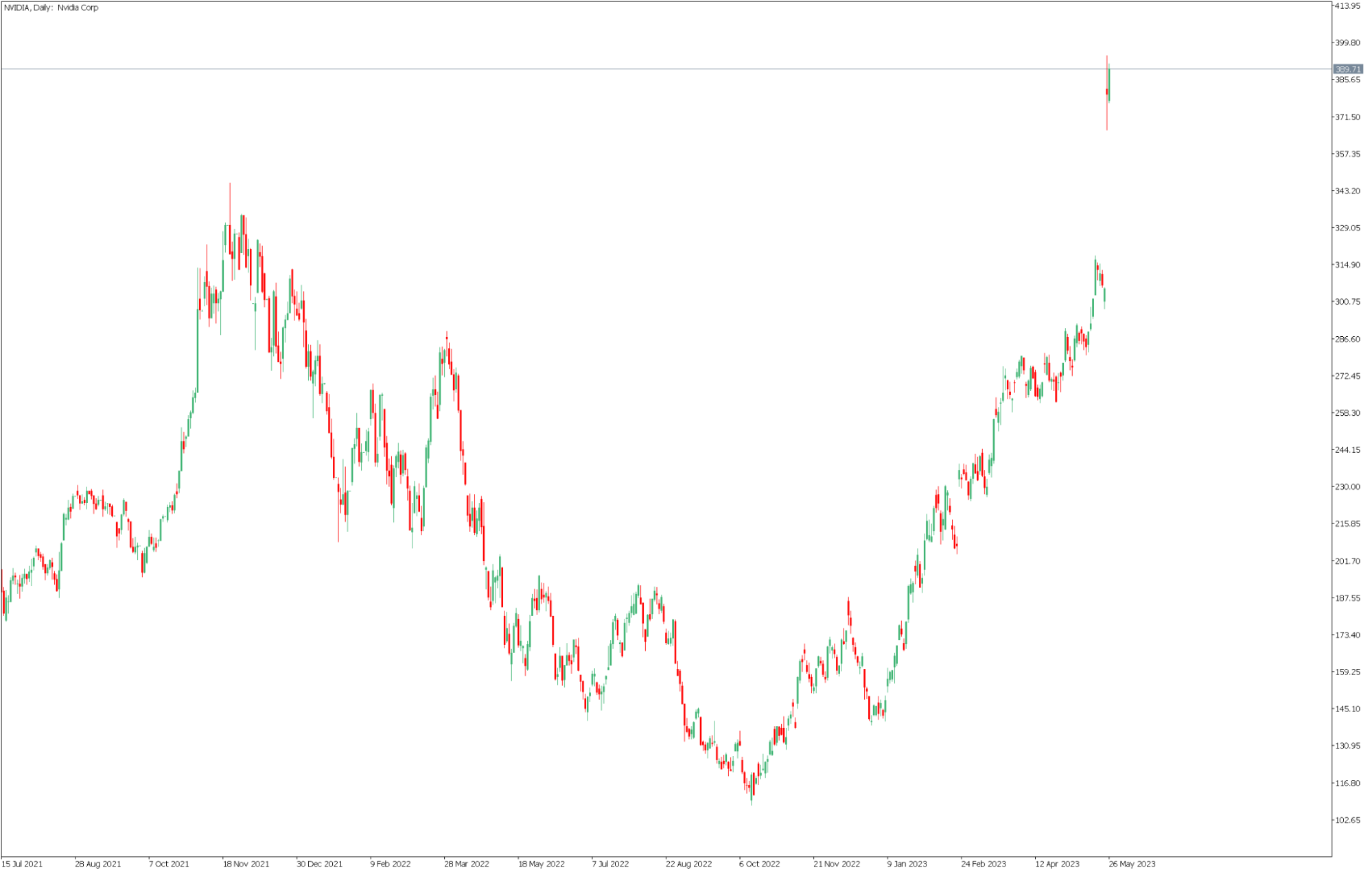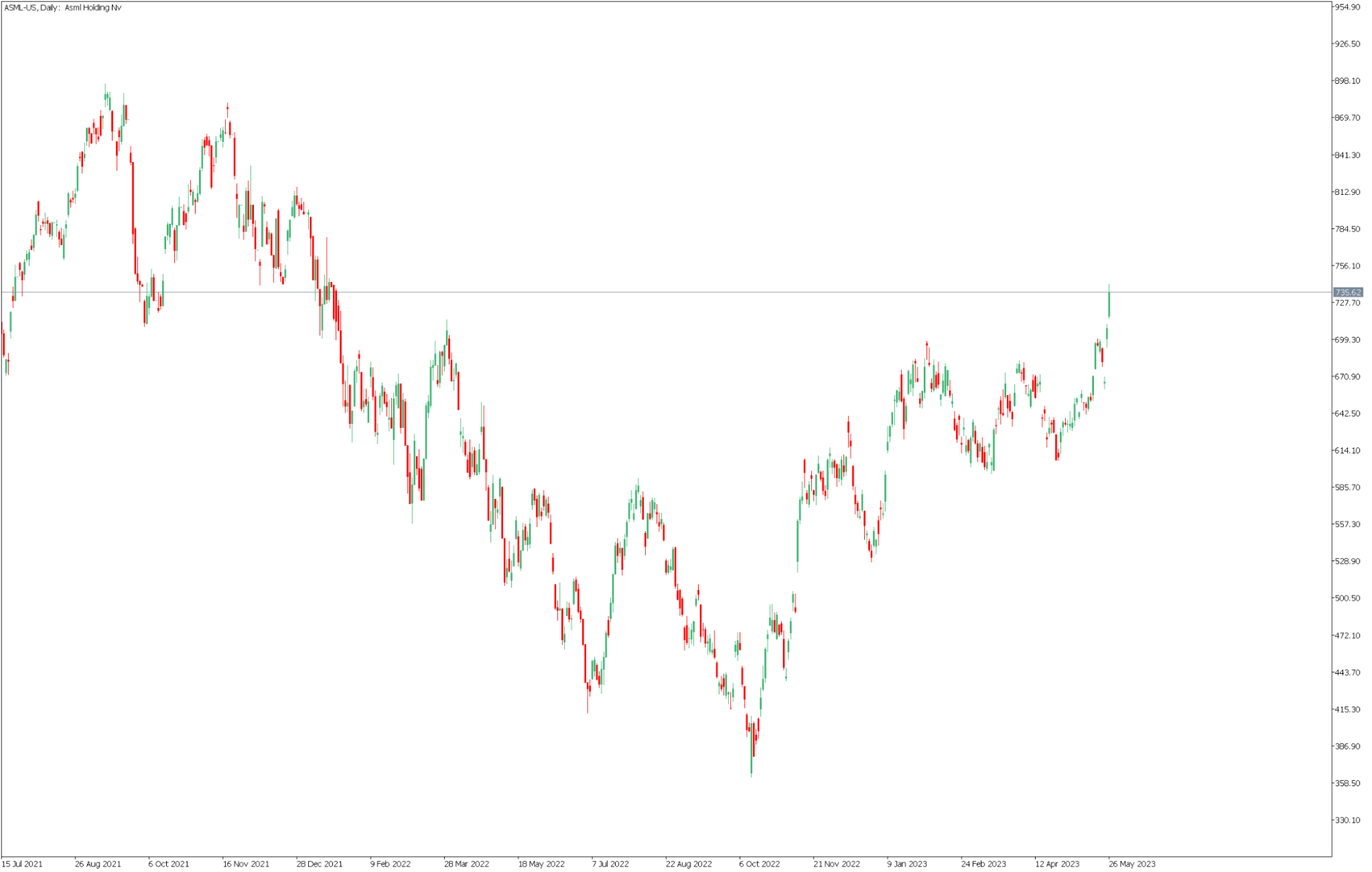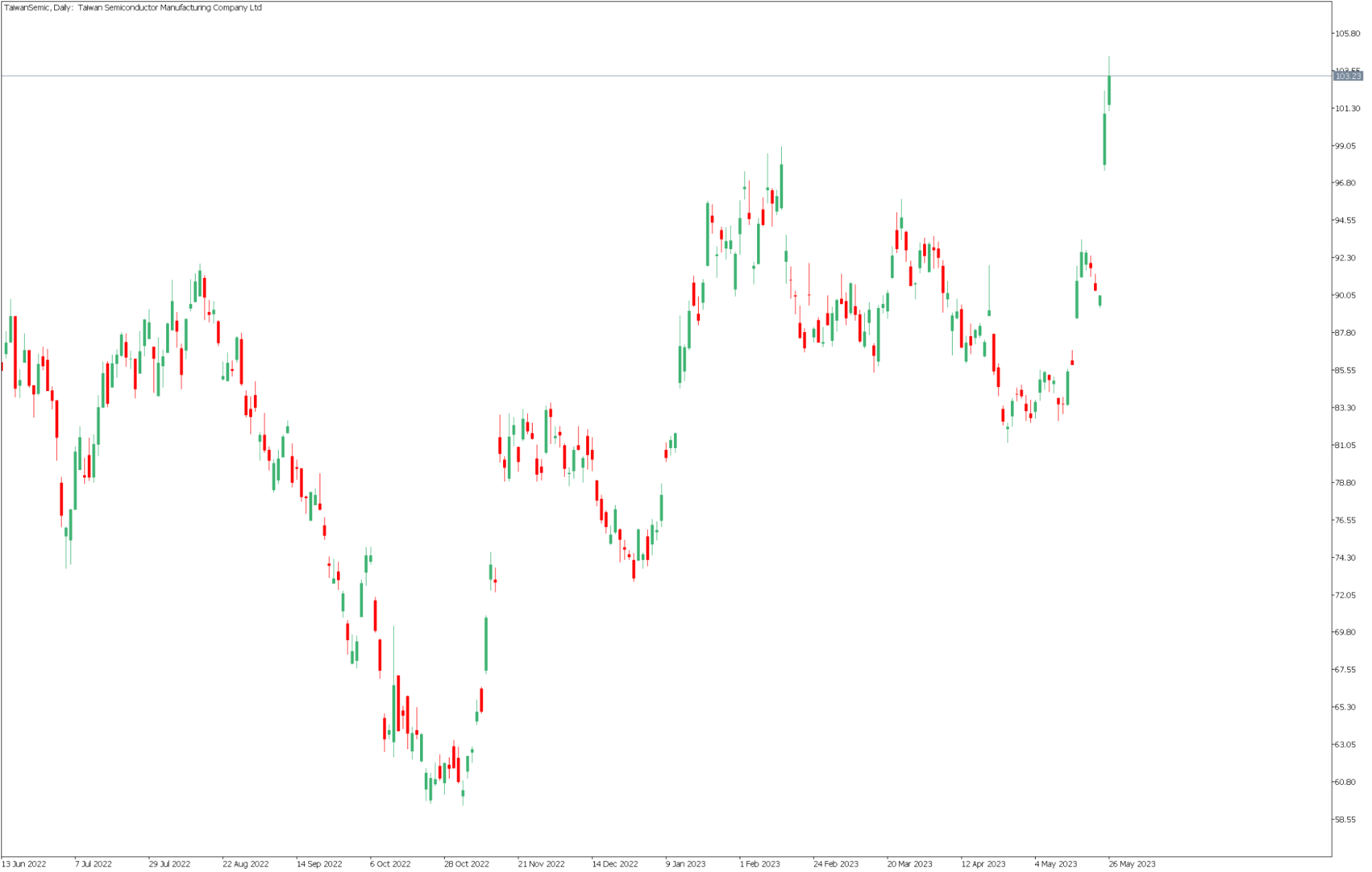On Thursday (25.05), we had the opportunity to see a historically large increase in the value of the company in a single day. Shares in technology giant Nvidia rose by 24%, representing an increase in value of as much as US$184 billion. This shot pulled most technology companies higher. The situation is beginning to resemble the 2000 bull market in internet companies that we described recently. Let's consider which companies stand to gain from the seemingly departing bull market train of AI-related stocks?

Source: Conotoxia MT5, Nvidia, Daily
A new gold rush?
Last week's rally provided us with the first clues as to which companies investors are typifying as the biggest beneficiaries of the changes taking place. We can see that current valuations are already starting to take into account the potential for 5-10 years. Surprisingly, the biggest increases were recorded by semiconductor companies, rather than the technology companies themselves providing specific artificial intelligence solutions. Just as tool manufacturers (picks and shovels) proved to be the biggest beneficiaries of the gold rush, so now computing power providers may be key players in this market. So a more apt term would be not the AI boom, but the computing power boom that artificial intelligence needs.

Source: https://finviz.com/groups.ashx?g=industry&sg=technology&v=210&o=name
Fabless manufacturing
To answer the question of which companies could benefit from the current changes, it is useful to understand how the semiconductor market is structured. Currently, a significant proportion of semiconductors sold worldwide are manufactured in what is known as fabless manufacturing, also found in the electronics industry, where a company designs and develops integrated circuits but does not have its own production factories. It therefore outsources production to an external entity that specialises in this field. Fabless manufacturing allows companies to focus on design and innovation, rather than investing in costly and complex manufacturing processes. By using external factories, companies can reduce time-to-market, increase production flexibility and reduce costs. Currently, two companies seem to be key in this process: Netherlands-based ASML and Taiwan-based TSMC. ASML Holding has a practical monopoly on the manufacture of EUV machines, which are essential for the production of state-of-the-art integrated circuits.

Source: Conotoxia MT5, ASML-US, Daily
According to the latest data from Statista, 58% of the world's semiconductor production is created by the Taiwanese company TSMC. Interestingly, this company has a practical monopoly in the market for the most advanced semiconductors produced at 7 nm and 5 nm scale, which are particularly heavily used in the development of artificial intelligence technology.
It therefore appears that these two companies in particular stand to benefit from the current changes. They are characterised by significantly higher profitability relative to graphics card and processor vendors. ASML Holding's net profit margin is 26% and TSMC's, a whopping 43% compared to Nvidia's 18%, AMD's 1.7% and Intel's recently reported loss.

Source: Conotoxia MT5, TaiwanSemic, Daily
Grzegorz Dróżdż, CAI, Market Analyst of Conotoxia Ltd. (Conotoxia investment service)
Materials, analysis and opinions contained, referenced or provided herein are intended solely for informational and educational purposes. Personal opinion of the author does not represent and should not be constructed as a statement or an investment advice made by Conotoxia Ltd. All indiscriminate reliance on illustrative or informational materials may lead to losses. Past performance is not a reliable indicator of future results.
CFDs are complex instruments and come with a high risk of losing money rapidly due to leverage. 73.18% of retail investor accounts lose money when trading CFDs with this provider. You should consider whether you understand how CFDs work and whether you can afford to take the high risk of losing your money.


